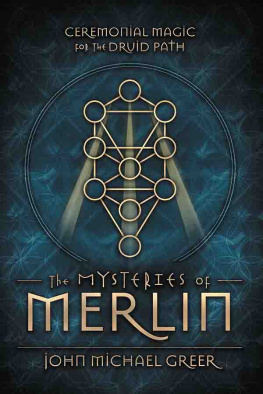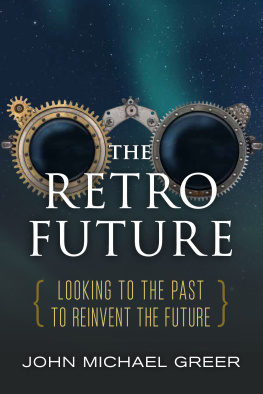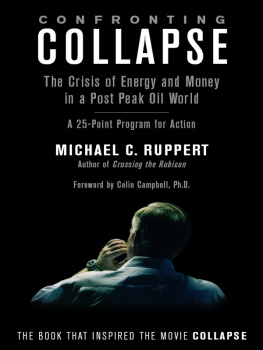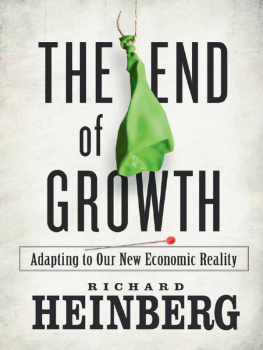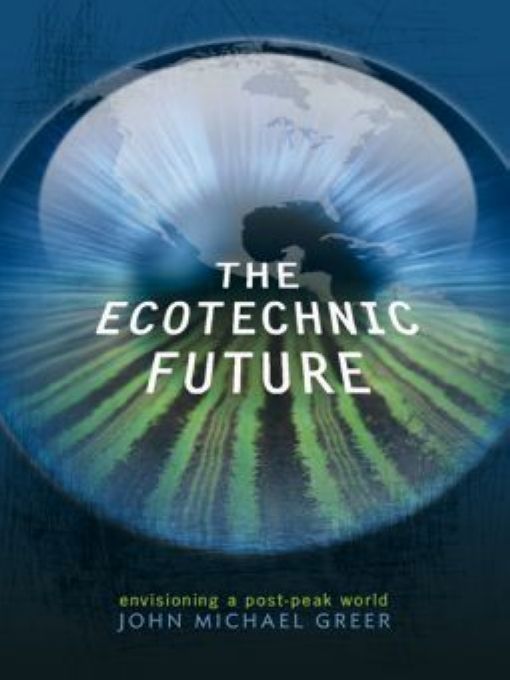Table of Contents
Advance Praise for The Ecotechnic Future
Greers work is nothing short of brilliant. He has the multidisciplinary smarts to deeply understand our human dilemma as we stand on the verge of the inevitable collapse of industrialism. And he wields uncommon writing skills, making his diagnosis and prescription entertaining, illuminating, and practically informative. Not to be missed.
RiCHARD HEINBERG
Senior Fellow, Post Carbon Institute
and author of Peak Everything
There is a great deal of conventional wisdom about our collective ecological crisis out there in books. The enormous virtue of John Michael Greers work is that his wisdom is never conventional, but profound and imaginative. Theres no one who makes me think harder, and The Ecotechnic Future pushes Greers vision, and our thought processes in important directions.
SHARON ASTYK
farmer, blogger (SharonAstyk.com)
and author of Depletion and Abundance
and A Nation of Farmers
In The Ecotechnic Future, John Michael Greer dispels our fantasies of a tidy, controlled transition from industrial society to a post-industrial milieu. The process will be ragged and rugged and will not invariably constitute an evolutionary leap for the human species. It will, however, offer myriad opportunities to create a society that bolsters complex technology which at the same time, maintains a sustainable interaction with the ecosystem. Greer brilliantly inspires us to integrate the two in our thinking and to construct local communities which concretely exemplify this comprehensive vision.
CAROLYN BAKER
author of Sacred Demise: Walking The Spiritual
Path of Industrial Civilizations Collapse
and publisher/editor, Speaking Truth
to Power (CarolynBaker.net )
Introduction
HISTORY HAS ITS turning points, the moments when pressures for change that have built over centuries finally burst through and reshape the world. Sometimes those moments can be sensed as they happen, but such moments of vision are rare; more often, the turning point can be traced only after the fact, when the failure of old patterns can no longer be ignored. In the gap between the coming of change and the moment of its recognition, old certainties fall to pieces and cannot be replaced, and plans for the future go awry because the future the planners have in mind fails to arrive.
A gap of this kind has become one of the most significant social facts of our time. The scale of that gap can be measured by the distance between the 21st century our society expected and the one that it got. Only a few decades ago, a galaxy of scientific pundits and media figures regaled an eager public with images of what the year 2000 would be like. There would be bases on the moon and a big wheel-shaped space station in orbit, with scheduled flights arriving there from Cape Canaveral twice a day. Undersea cities would dot the continental shelves and harvest the supposedly limitless resources of the sea. Clothing would be disposable and food would be synthesized on demand; fusion reactors would turn out limitless cheap power, geodesic domes would sprout everywhere and commuters would travel from lush suburbs to climate-controlled cities by helicopter instead of by car.
These fantasies were taken very seriously at the time seriously enough to guide business decisions. In Seattle, where the 1962 Worlds Fair celebrated a 21st century full of space travel and triumphant technology as though it had already arrived, one forward-thinking builder in those years topped a new parking garage with a helipad and control tower, in hopes of getting a jump on the competition. As far as I know, no helicopter ever landed there, and the garage with its forlorn heliport was torn down during the housing boom of the late 1990s to make room for a block of singularly ugly condos. By that time, the rest of the future portrayed in the 1960s had suffered the same fate.
Behind this fact lay a simple but profound change in the foundations of the industrial world. Until the end of the 1960s, the biggest problem with energy resources in North America was how to keep the market from being drowned in too much oil. An obscure bureaucratic body, the Texas Railway Commission, had to restrict petroleum production in the United States to keep prices above production costs. Those days are gone, and not even the reckless overproduction that crashed the price of oil in the 1980s brought them back. The same sea change transformed the worlds relationship to other natural resources, and to the natural cycles our civilization uses to absorb its wastes. In the 1980s and 1990s, the worlds industrial nations used every economic, political and military lever they had to force down the prices of raw materials and the costs of pollution from their 1970s peaks, but the easy certainties of an earlier time had vanished.
Today the modern industrial economy seems as permanent as any human reality can be. That sense of permanence, though, is an illusion. The nonrenewable resources that went into building industrial civilization were vast, but they were never limitless. Their limits are now coming within sight, along with the equally strict limits of the Earths ability to absorb the pollutants we dump into the skies, the seas and the land. In the aftermath of the 1960s, the industrial world could potentially have responded to the arrival of the limits of growth by launching a transition toward a sustainable future. For intensely human reasons, though, that was not done in time to make a difference.
The consequences of that failure to act have been examined in many recent books. Their message is a sobering one: what remains of the Earths natural resources and its capacity to absorb pollution will not allow us to continue living much longer the way we live today, much less provide for the endless progress nearly all todays political and economic ideologies expect. In place of the bright new world most of us anticipate, we are headed at a breakneck pace toward a future of narrowing options, dwindling resources and faltering technology, in which many of todays fondest dreams will face foreclosure.
This is the territory that my first book on the future, The Long Descent, set out to explore. That book studied the histories of other civilizations that had outrun their resource base, and used the parallels to map the trajectory our own future will most likely take: a ragged process of decline and fall unfolding over one to three centuries, ending in a dark age like the ones that followed the twilight of so many other civilizations. Many of the larger questions raised by that analysis, though, were left unanswered. It is one thing to recognize that todays industrial world is headed toward that difficult destiny. It is quite another to grasp what such a future implies, and to glimpse what the world will be like in the wake of our civilizations fall.
These more ambitious and quite possibly more foolhardy themes are the focus of this book. The reasons why the industrial age is ending and the immediate steps that can be taken by individuals and communities to cushion the descent are discussed in The Long Descent and many other books on the same topic. Here, I will discuss these points only where they relate to the wider project of this book. Instead, The Ecotechnic Future



